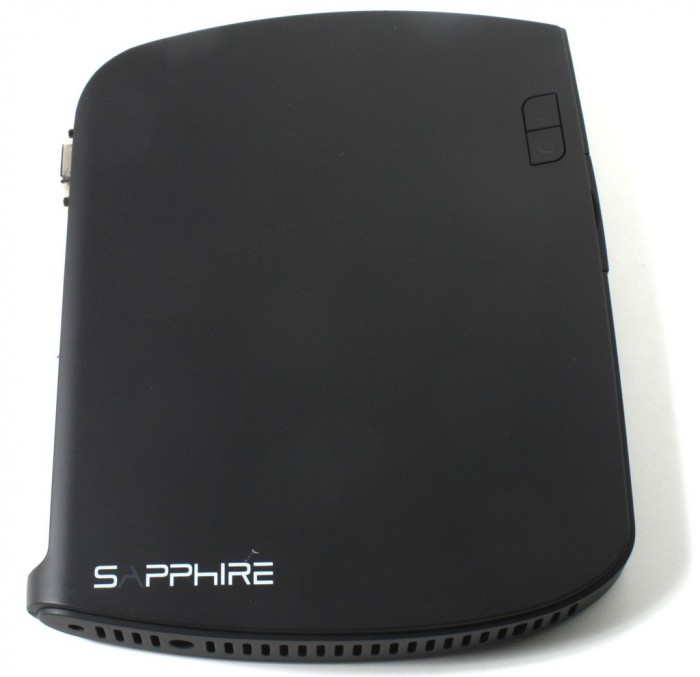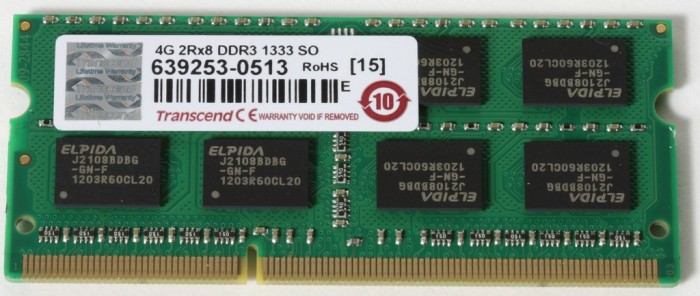The Sapphire Edge HD4




Click Image For a Larger One
The Packaging for the HD4 is nicely designed giving you a good visual as to what you are getting in the box and what exactly the unit looks like.




Click Image For a Larger One
Here you can see what comes in the box which is virtually everything down to HDMI cable and even a HDMI to DVI adapter which means pretty much any display can be connected to the HD4 from VGA, DVI to HDMI which means it should fit most any users needs.




Click Image For a Larger One
Here you can see the chassis itself, it is literally as small as a Mini ITX board is not smaller and my hand easily spans the device entirely. Connectivity is pretty good for this little unit with the following:
- DC Power Jack
- 3x USB 2.0 (2 rear, 1 front)
- USB 3.0 port (Front)
- 10/100/1000Mbps LAN port
- HDMI port
- VGA port
This connectivity is more than enough for some control peripherals along with even external USB or even super high speed storage device interfaces. Also not visible but the HD4 unit has a full Wireless n card/antennae internally mounted to ensure wireless connectivity can be established.
Taking a look inside



Click Image For a Larger One
Looking at the chassis itself there are no visible screws or ways to disassemble the case to peer inside. Upon further investigation I realized the panel opposite the power switch side is clipped in place and with a flat tool such as a credit card you can slide it along and release the clips to allow the panel to be listed away. Once removed you can see the WiFi card in place and some screws needing removal before you can remove the other side plate which shows the system components.
Once removed the top panel comes away and you can see the full system which as you can see the super small 2.5″ HDD takes up almost 40-50″ of the surface area so that should give you an idea of how small this unit actually is. upon removing the drive and the laptop style cooler you can see that this system really is quite simple with the CPU being BGA and non replaceable only the memory and main drive are swappable. If I was Sapphire i would look into a hybrid or even full SSD option just to give the much snappier feel that this unit really needs.



Click Image For a Larger One
Here we can see the BGA CPU the Celeron 847 which is Sandy Bridge based so you know it is quite an efficient unit but at 1.1GHz it is a bit limited. The ITE IT8772E is used for Sensor controls and the Audio duties are put to good work with the Realtek ALC662 which supports a reported up to 6 Channel audio output.




Click Image For a Larger One
Here you can see the single Memory DIMM which is a Transcend unit spec’d to run at 1333MHz or default speed. The Aluminum block is actually a heatsink of sorts and is placed on the board chipset to help dissipate the minimal amount of heat away from the unit. The block seems quite stuck on very well so rather than damaging the unit I went ahead and let it be. the WiFi module is a standard type like you will find on many notebooks or other small devices but the HD4 only utilizes a single antennae connection, which is unfortunate as dual antennae within the chassis might actually help boost WiFi signal reception for a faster and more stable usable connection. Lastly there is the Texas Instruments TUSB7320 xHCI USB 3.0 host controller used to enable USB 3.0 function on the HD4 with the front panel USB 3.0 port.
First Boot (And real world usage discussion):
The first boot was rather quick. The C:\> prompt as Sapphire comes preinstalled with FreeDos which is nice for nostalgia’s sake but it does very little for actual usability other than a placeholder for whichever OS you choose to load into the unit.
Needless to say the FreeDos had to go so since we had to load an OS we figured we would try it out and see what exactly OS would work and how well it would work on this little unit.
Ubuntu 13.04 “Raring Ringtail”
We placed the full Ubuntu 13.04 installer on to my Patriot USB 3.0 Flash Drive and upon installation we were quite surprised that every driver loaded by default with no issues. Also it is worth noting that those working on the Ubuntu release thinks that with 13.04 it is ready to go to mainstream users. We are sorry to report that you do need to use many command line based instructions to install things in Ubuntu, and well with the automation of executables and installer packages for Windows or MAC OS X we really cannot say that Ubuntu is ready for the masses until they can automate much more of the installation procedures.
Ubuntu is very fast on the HD4 and with the XBMC program installed it works very well as a media center/general usage living room PC.
Windows 7 x64
Installing windows 7 was as easy as putting the installer on a thumb drive or using a USB optical drive. However once installed many devices simply were not natively installed such as the LAN port or WiFi which was a surprise since the Ubuntu distro simply fired up and worked. Once all drivers were installed we did notice that Windows is not as light and definitely has a few more moments of hitching and small delays depending upon what you are doing. We were a bit disappointed by this and upon swapping the blue drive out for a 240GB Kingston HyperX SSD we found the system to be much more responsive and ultimately flat out faster with programs opening very quickly without delay. This tells me that there is simply much more drive activity involved with the wondows OS where the Ubuntu distro just loads into high memory and flies along.
Basically in a nutshell if the HD4 will be employed simply for multimedia usage such as XBMC you would be much better served learning the little bit about Ubuntu as it is a free OS and much more snappy on this small device or even install the XBMC-untu which simply automatically starts into the Linux version of XBMC and turns the HD4 into a solid straight up media streaming device. The other thing to note is that a retail versions of windows will run $100.00 USD and up where as Ubuntu and XBMC distros are free so for light usage this may be your better option.
Performance - 8
Quality - 9
Features - 8
Innovation - 8
8.3
The Sapphire Edge HD4 offers super low power usage with a proven Sandy Bridge based platform which offers a super effective light use desktop replacement. For this it earns the Bjorn3D Silver Bear Award.
User Rating:
Be the first one !
 Bjorn3D.com Bjorn3d.com – Satisfying Your Daily Tech Cravings Since 1996
Bjorn3D.com Bjorn3d.com – Satisfying Your Daily Tech Cravings Since 1996




























